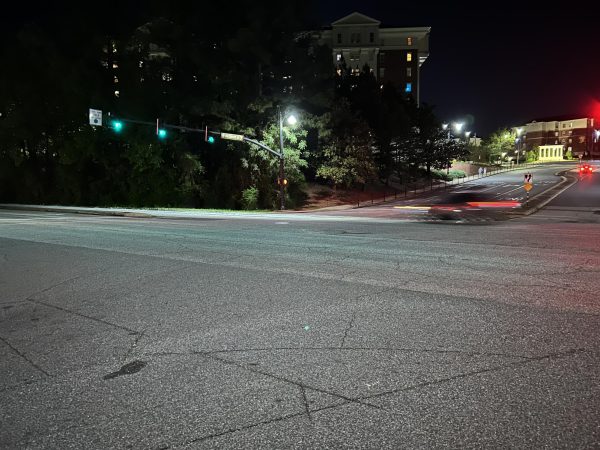UA researchers awarded grant to study opioid morbidity in four West Alabama counties
August 19, 2019
Opioid overuse rattles West Alabama communities that don’t have the medical resources to treat and prevent drug epidemics, furthering economic and quality-of-life concerns in areas that once made the state prosperous. But with a new grant, UA researchers are working to provide homegrown solutions to a nationwide problem.
Sponsored by the Health Resources and Services Administration, the Rural Communities Opioid Response Program was funded by a $200,000 planning grant at the end of June to clear the way for a year of researching the opioid epidemic in Marion, Walker, Winston and Franklin counties.
“Addiction is a social infection, and it’s sweeping across the state,” said Joshua Eyer, a multi-principal investigator on the project.
The main investigators behind this endeavor are Hee Yun Lee, associate dean for research and endowed academic chair in social work; Eyer, an assistant professor in the Capstone College of Nursing; and Matthew Hudnall, the associate director of the Institute of Business Analytics. So far, their journey has been filled with zoom conferences and spreadsheet magic.
“If you look at opioid prescriptions per capita and a number of other factors, that region is quite highly ranked nationally for being one of the worst contiguous regions in the United States,” Hudnall said.
Spurred by a Washington Post release of ARCOS data following an Ohio lawsuit, Hudnall tracked down a judge, a law clerk, the plaintiffs on the case, then the plaintiff’s attorney in order to get raw access to a trove of data on how opioids flow into communities. The group is using that data to get a sense of the consumption within these communities.
“In comparison to the rest of the state, these areas have the highest opioid prescription rate per 100 people, poverty rates, uninsured rates and limited access to healthcare,” according to the abstract for the 72-page proposal, which received a 98 score by evaluators. “Currently there are extremely few prevention, treatment, and recovery facilities related specifically to opioid addiction in these areas.”
The project went into effect on June 1, 2019 and will last until May 31, 2020. During that time, Lee, Eyers and Hudnall, along with other researchers and community partners, will be working to develop a model for opioid prevention, treatment and recovery in efforts to gain larger grants that will enable them to implement a series of programs and practices designed to foster in-depth solutions.
One of those practices that they have already proposed is a service called TeleECHO, which works with infrastructure currently in place to connect rural medical practitioners with project partners who can provide low-cost training surrounding issues of opioid-related morbidity and mortality. The Capstone Rural Health Center in Walker County will act as the hub for this service, and clinics in the surrounding area will act as spokes, Lee said. Currently, the group is working with the University of New Mexico to perfect the model.
Eyer said working with affected communities is key to providing sustainable solutions. That means town halls and meetings with local schools, clinics, churches, food banks and law enforcement will be needed in every stage of the project.
The idea is that we’re going into the model and reaching out to everybody who’s involved in this, and getting them all to interconnect and bring their voices to the table,” Eyer said. “This entire grant is really designed to amplify the voices of everyone who has a piece of the solution, and getting them together to share their expertise so that as a group, we can all come up with solutions for this region.”
Other researchers include Daphne Cain and David Albright from the school of social work and Monika Wedgeworth, Shameka Cody, Cheryl Hines and Mercy Mumba from the Capstone College of Nursing. Community partners include the Alabama Department of Public Health, the Alabama Departments of Human Resources, Northwest Alabama Mental Health Center, Parents Resource Institute Drug Education, Walker Area Community Foundation and the UAB Center for AIDS Research, among law enforcement agencies, first responders and schools.











